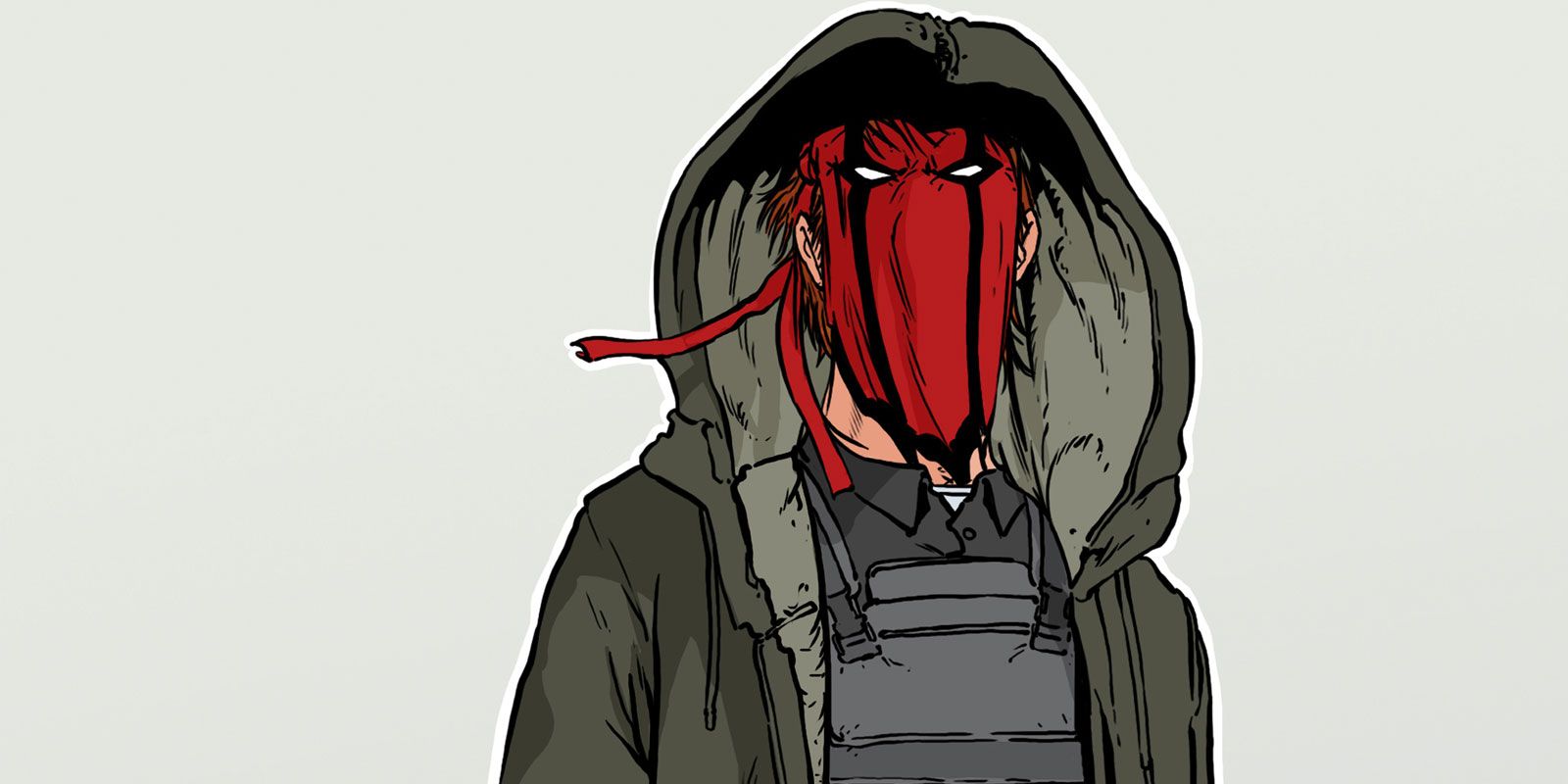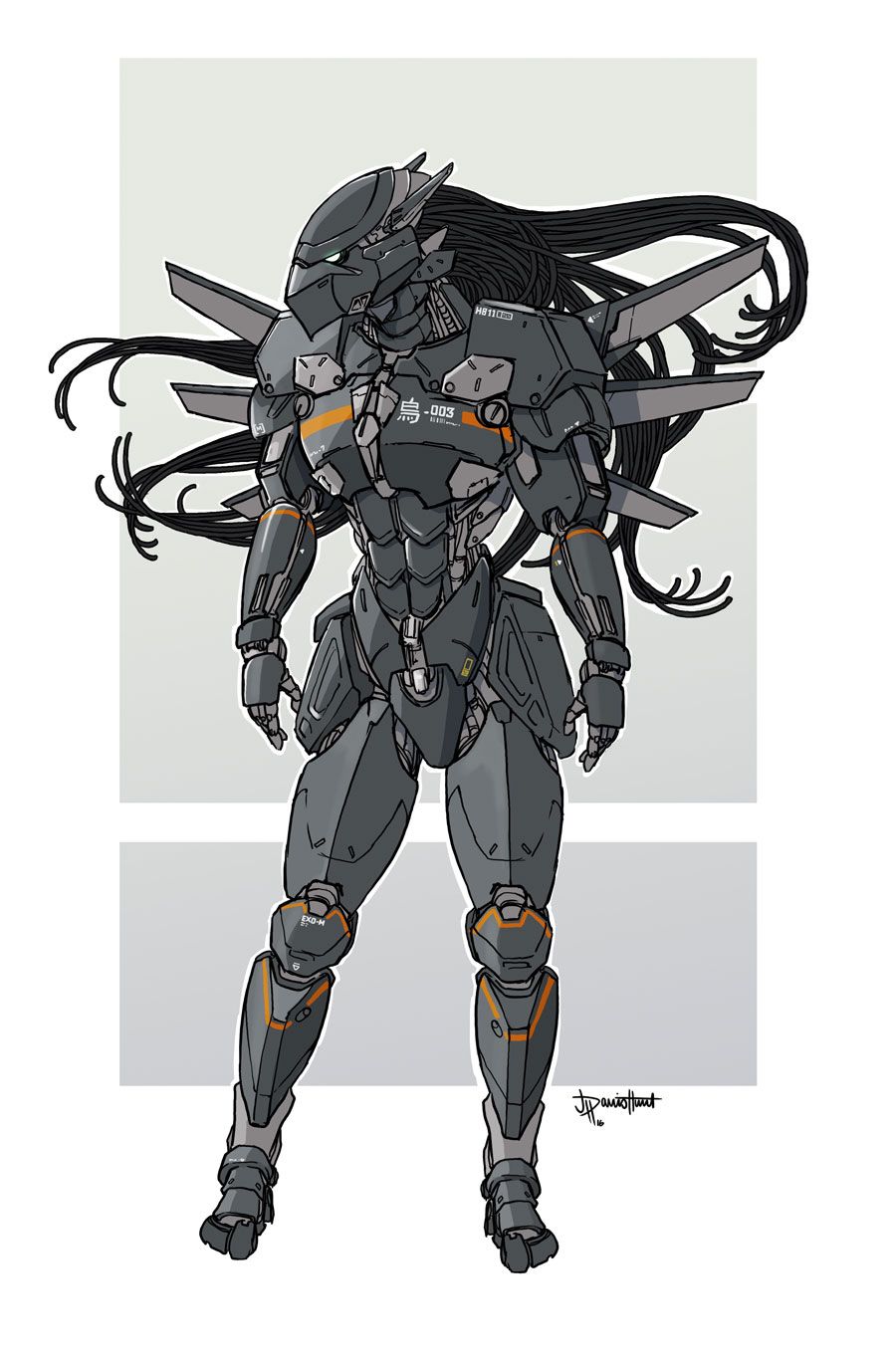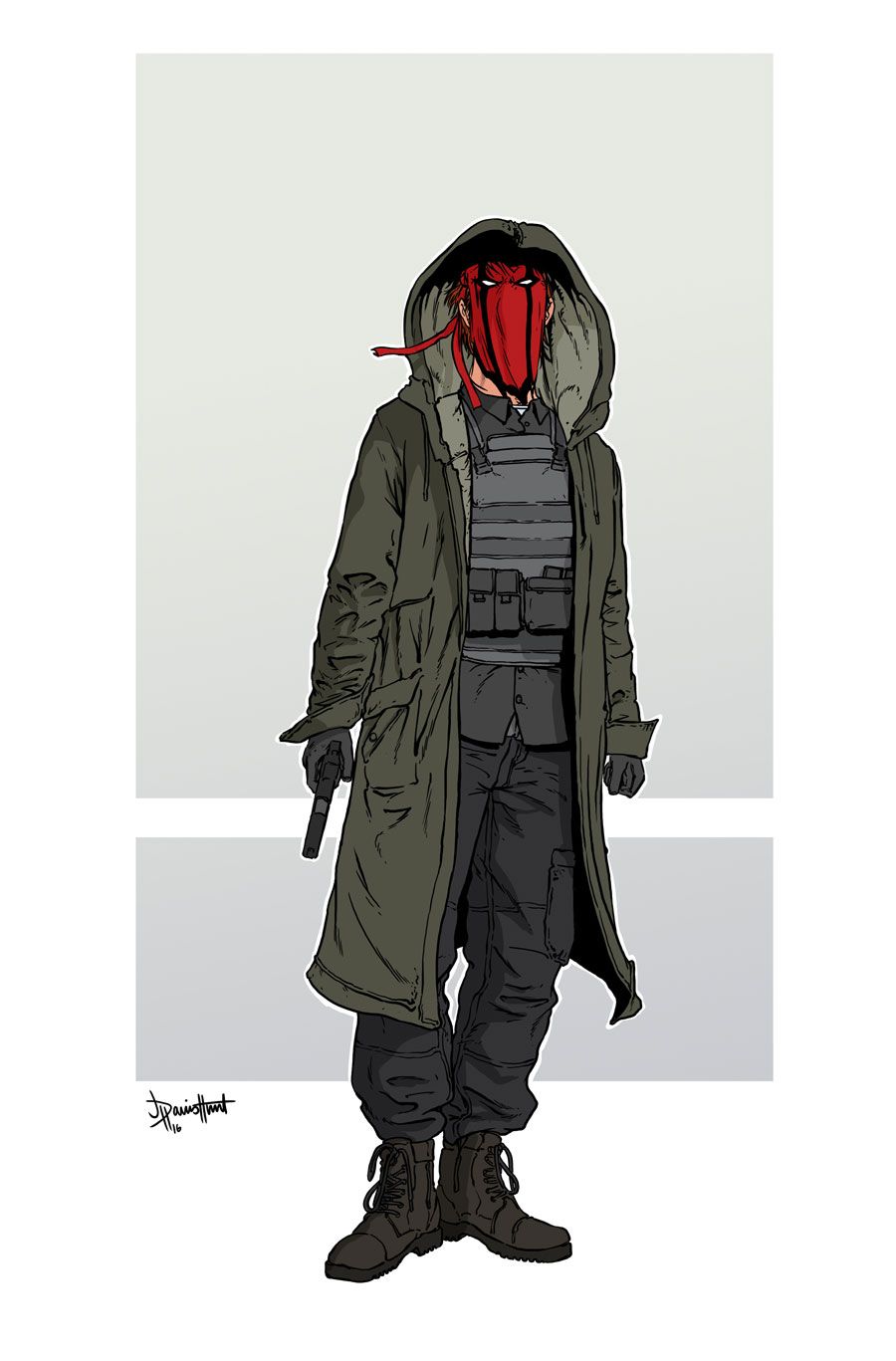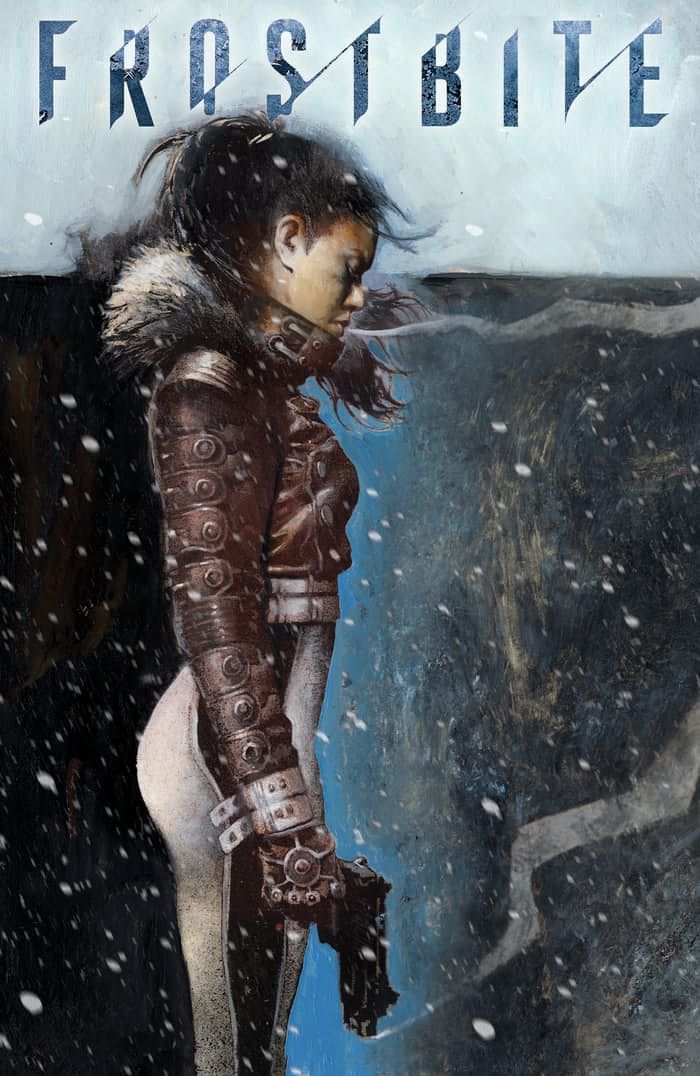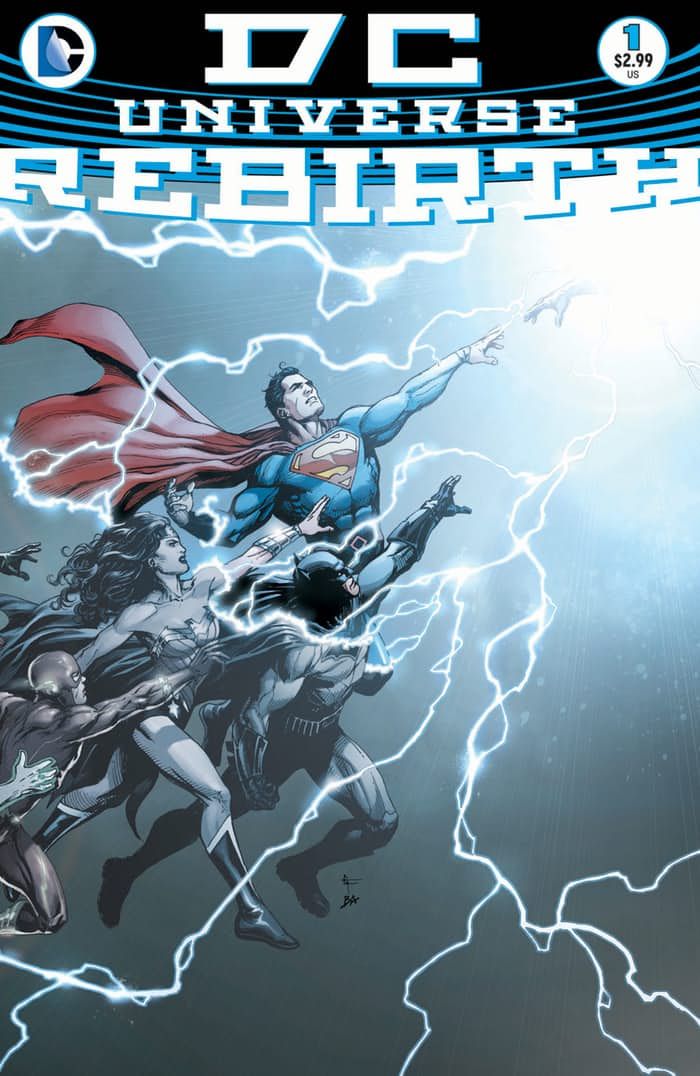In the days before New York Comic Con, DC Comics made an announcement that felt both surprising and inevitable at the same time -- the return of the WildStorm Universe, this time around as a "pop-up imprint" with the characters and concepts reimagined by superstar writer Warren Ellis.
While Ellis is responsible for some of the most famous series in WildStorm history -- specifically "Stormwatch," "The Authority" and "Planetary," dating back to the days when WildStorm was still part of Image Comics -- it's been years since he's written anything for DC Comics. It's also been years since WildStorm has existed as a separate entity, as DC folded the imprint as of December 2010, integrating some of its characters into the DC Universe as of 2011's New 52 launch.
The new WildStorm is scheduled to start in February with "The Wild Storm," a new monthly series written by Ellis and illustrated by Jon Davis-Hunt. "Michael Cray," "WildC.A.T.S." and "Zealot" are also on the way, though no creative teams have yet been announced.
CBR spoke with DC Comics Co-Publishers Jim Lee -- who founded WildStorm in 1992 and co-created many of its character -- and Dan DiDio earlier this month at NYCC, to discuss why now was the right time to revive WildStorm and its characters, how Warren Ellis got involved, where long-running mature readers line Vertigo fits in with DC's current imprint-heavy lineup and the possibility of major line-wide superhero events making a return to DC during the "Rebirth" era.
CBR News: Jim, Dan, let's start with the recently announced WildStorm revival -- why was this the right time? And how did things come together for Warren Ellis to be at the head of it?
Jim Lee: Since the launch of the New 52, we decided to sort of rest the WildStorm characters. We wouldn't bring them back in force until we had someone who could actually drive the creative, and make a difference, and create the sales momentum I think you need when you launch a new imprint. Warren Ellis was always on the top of that list. I kept checking in with him -- badgering him, essentially -- and finally, I was able to convince him to come on board. Once we knew we had that, we knew that we basically wanted to wait until we had a lot of creative from him until we announced it. We wanted to make sure that when we launched with this, that it's going to come out regularly, that it's fully formed.
We have six issues of scripts in the drawer, we have outlines for all four books. We have his commitment to the line; we have an artist now in place, Jon Davis-Hunt. All the critical elements came together. We've been working on this for a long time, so we're just excited to be able to formally announce it, and now we're going to tease all sorts of crazy stuff until we launch in February of next year. It is really a top to down reimagining of the universe as only Warren can do. He got the central narrative of the entire universe, and he was always able to reflect that tonality in the stories he created, and best defined who these characters were. I'm very excited to him come back to the characters.
When using words like "reimagining" -- is this a total fresh start?
Lee: Yes. It's a fresh start. All of the characters are recognizably their characters, but they might be slightly tweaked. The teams might not necessarily be fully formed and not in the order they were first conceived or published. The thing about Warren is, he's not going to retread or redo what he's already done. He's going to want to do something that's fresh and different. It's interesting, having read the issues, where the characters start and where they're going to develop. The four books that will eventually be in the line all come out of that first series, called "The Wild Storm." That's really the genesis of this new universe. It's one bigger story that he's telling through multiple different titles.
There are a couple of WildStorm characters currently integrated into the DC Universe -- Midnighter and Apollo are two big ones, currently starring in their own miniseries -- will they remain unaffected, effectively stay in place where they are?
Lee: We're publishing them now, but there's been a lot of characters that haven't appeared. I think it's safe to say, without getting too in the weeds and ruin the fun of comics and say "this is Earth-27" or whatever, this is a separate universe. Whatever you've seen of the WildStorm characters in the DCU is not necessarily reflected in what Warren is doing.
Let's talk the publishing line as a while, since there's been a real a broadening beyond the DC Universe -- there's definitely a renewed focus there with Rebirth, but there's also Hanna-Barbera, Young Animal, and now WildStorm. It almost reminds me of DC 20 years ago, where imprints and a variety of type of books was a big part of the company's identity. What's your current philosophy in regards to the importance of imprints?
Dan DiDio: I think all of these pop-up imprints -- we're calling them "pop-up imprints" -- are essential to the line. What you've seen with Rebirth is us doubling-down at the core business, really strengthening up the characters people want to see in our superhero line. We're not really looking to expand the Rebirth line that wide -- you saw that we're only going to introduce three new titles come February. But that doesn't mean that we' stop growing and trying different things. It's essential we constantly try to push new ideas and new ways to get people excited about our product.
For me DC Comics, it was always more about the horror comics, or the war comics, the mysteries -- all the crazy corners is what I always loved about DC. We don't want to sacrifice that as we really strengthen our superhero line. But the superhero line, and the strength of that, created the foundation that allows us to take even greater risks, take greater chances. The wonderful thing about that is, the Hanna-Barbera books are successful in their own right. Young Animal is a bigger success than we imagined it to be, and we're hoping for the same thing with WildStorm. We have so many rich characters, you don't want to fit them all into the same box, because they all don't operate the same way. But we know that we want to grab as diverse an audience as possible, and we have so many different types of characters and stories to do that with.
Obviously a very important line in DC's history is Vertigo, which hasn't necessarily been an easy line to approach in the current climate, due to the nature of the business. Clearly, though, DC still has a lot of faith in the brand, and there's been news on that front this year -- John Ridley returning to "The American Way," "Frostbite," "Lost Boys." What's your take on where Vertigo is now, and what it can do that can't be done in other places in the industry? What makes it a draw for creators?
Lee: When you have a success like DC Rebirth, that gives you the time and resources to look at your other imprints, and other pop-up imprints, and other initiatives that you're planning, and do them right. We have a new leader at Vertigo in Jamie Rich, he has different sensibilities, different past experiences, he's also been a creator. "Frostbite" is one of the first projects he's brought in, and it's done very well for us. It's a different tonality than even what we were publishing before, and Josh Williamson is a guy who has mainstream chops that he's brought in, and has produced something that's really a cool, high-concept book. John Ridley is another element of the rebuilding at Vertigo.
I think the staff of Vertigo has been a very versatile one. You're seeing their fingerprints, you're seeing their expertise and their contacts and their relationships come to fruition in things like Young Animal. They're handling a lot of content for the company; it's not necessarily under a pure "Vertigo" imprint. But as we rebuild the foundations of Vertigo by bringing in new creator-driven, creator-owned books, it gives us the time and coverage to have patience with the line, and put out books, and give them time to breathe and launch properly, like "Frostbite."
"Frostbite" is a notable example, because it seems like Vertigo is now a place where creators who are working on more mainstream books, like Joshua Williamson, have a place to work on quirkier, more mature products. When it was announced that Sam Humphries had signed exclusively with DC, Vertigo was specifically mentioned as a part of that, even though he hasn't had a Vertigo project announced yet.
DiDio: And that's the main goal. We really want to build our own creative community here. That's why we put a number of folks under contract. The goal is to not just be able to bring their sensibilities, their talent to our work-for-hire characters, but also create an environment where this becomes their first place to go where they have creator-owned properties. Vertigo was the premier imprint for creator-owned material for many years. I believe it still is -- or can be again.
Our goal is to make sure we attract the best talent in the best ways possible, show them the strength of the company behind them -- honestly, there's no better way to launch a creator-owned book than to have the strength of DC Comics behind you. I think they realize that now -- a lot of these guys have to produce their own material, and they realize the support that we can give them to make their books even better, and achieve even bigger goals.
The one thing we haven't seen for a while -- and for a while DC was deliberately avoiding it -- is a big, line-wide superhero crossover. "Forever Evil" was kind of that but not the same scale, "Convergence" was line-wide but not quite the same. Now that Rebirth is off the ground, and there's more of a cohesive focus on superhero line, is that something we might see again soon?
DiDio: When we did Rebirth, there was a couple of things that we took away from a lot of the conversations we had with fans and retailers. Two of the things that seem to be missing the most from DC in the New 52 line and that period of time was the sense of the generational aspect, the sense of legacy, but also the sense of connectivity -- the shared universe. When you look at movies, or TV shows, or anything else, they're capitalizing on the shared universe. That's something that is unique to what DC was, and something that was a great strength of our company, different than so many other publishers, and we had avoided it for an extended period of time. Now we're going back and embracing it.
We're not going to just go from event to event with the idea that's the only thing that sells a comic, but we're going to do events that really help drive our major storyline, and when we have moments in our line that we think needs to be elevated, and put under a much bigger spotlight. That's why we look at "Justice League vs. Suicide Squad," because we say, here's this great collection of characters, the teams are natural opposites, so it only makes sense to bring them together to create that dynamic, to really explore the characters better. We've had that chance to build that foundation with these characters, establish them with their own series, now we're in a spot where we can cross them over, we know who they are, we know how they behave, as well as move the big storyline forward. Things that were introduced in the DC Universe: Rebirth special will be played out a little bit here, and the slow reveals are going to be coming. This will be one of the first moments where we see some of that being revealed, some of those questions being seen, we might get an answer or two, we'll get a lot more questions, but you'll get a sense that the universe is definitely moving forward.

